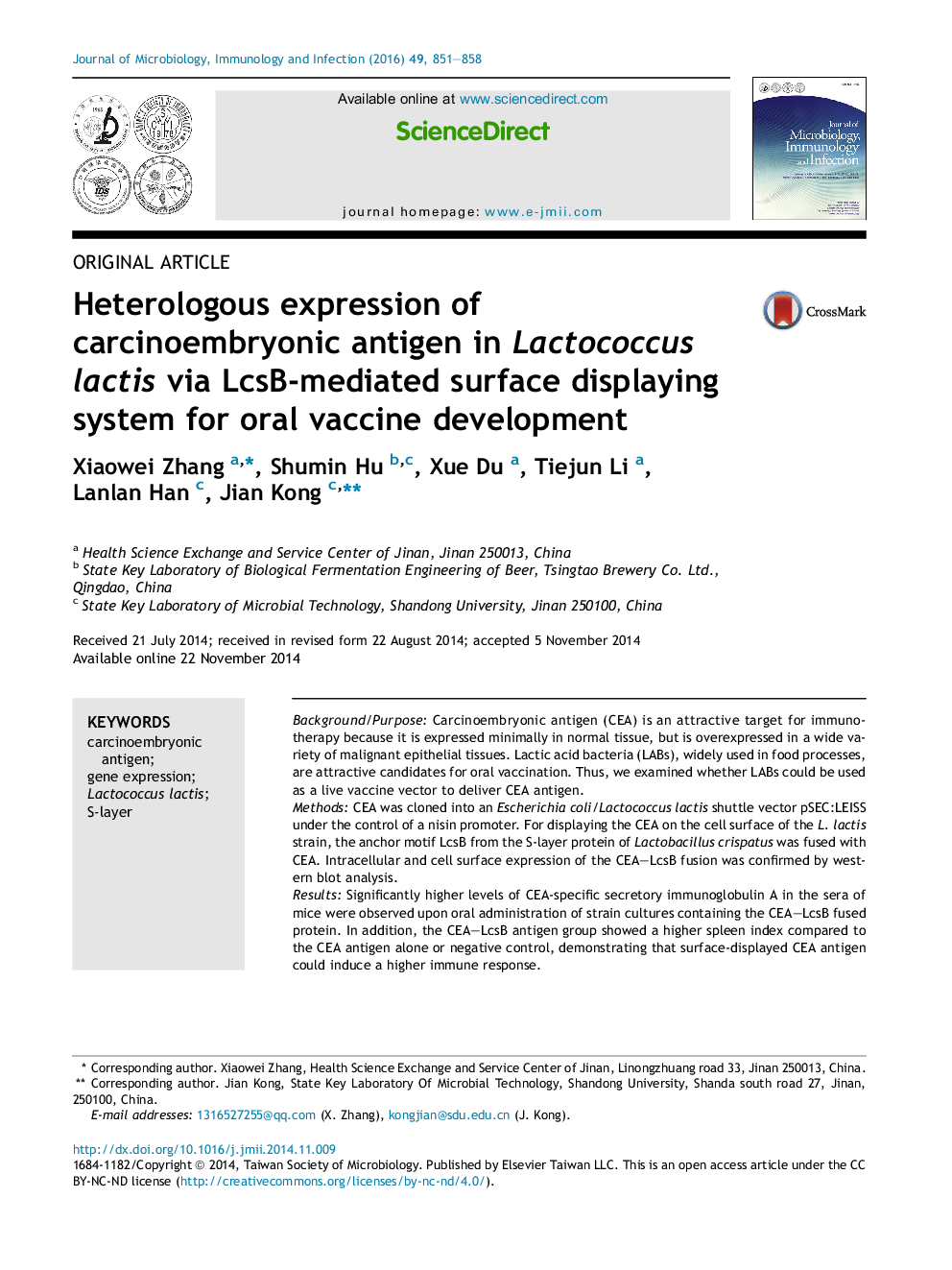| Article ID | Journal | Published Year | Pages | File Type |
|---|---|---|---|---|
| 5669156 | Journal of Microbiology, Immunology and Infection | 2016 | 8 Pages |
Background/PurposeCarcinoembryonic antigen (CEA) is an attractive target for immunotherapy because it is expressed minimally in normal tissue, but is overexpressed in a wide variety of malignant epithelial tissues. Lactic acid bacteria (LABs), widely used in food processes, are attractive candidates for oral vaccination. Thus, we examined whether LABs could be used as a live vaccine vector to deliver CEA antigen.MethodsCEA was cloned into an Escherichia coli/Lactococcus lactis shuttle vector pSEC:LEISS under the control of a nisin promoter. For displaying the CEA on the cell surface of the L. lactis strain, the anchor motif LcsB from the S-layer protein of Lactobacillus crispatus was fused with CEA. Intracellular and cell surface expression of the CEA-LcsB fusion was confirmed by western blot analysis.ResultsSignificantly higher levels of CEA-specific secretory immunoglobulin A in the sera of mice were observed upon oral administration of strain cultures containing the CEA-LcsB fused protein. In addition, the CEA-LcsB antigen group showed a higher spleen index compared to the CEA antigen alone or negative control, demonstrating that surface-displayed CEA antigen could induce a higher immune response.ConclusionThese results provided the first evidence for displaying CEA antigen on the cell surfaces of LABs as oral vaccines against cancer or infectious diseases.
